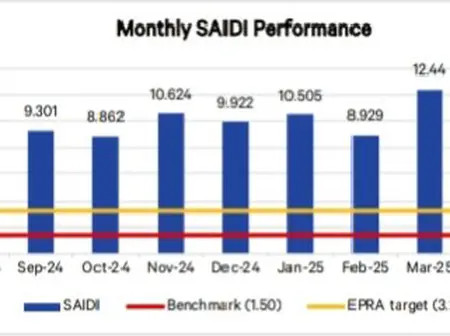Kenya recorded fewer and shorter power blackouts in the financial year ended June 2025, but the reliability of its electricity grid remains well below both national and regional standards.
Even with the improvement, Kenya’s reliability indices remain among the weakest in the region. The measure of outage duration has consistently exceeded EPRA’s threshold and regional benchmarks for the last five years.
On the frequency of outages, Kenya’s index stood 1.94 interruptions above EPRA’s benchmark of 1.63 per month and 2.47 above the regional average of 1.10.
Meanwhile, system losses averaged 23.36% during the year, still above the 17.5% ceiling set by the Energy and Petroleum Regulatory Authority (EPRA) for the tariff control period. The losses were also 0.15% higher than the previous year, extending a five-year pattern in which losses have stagnated around 23%.
The persistence of technical losses in transmission and distribution, coupled with commercial losses from illegal connections and meter tampering, leads to foregone revenue that must be absorbed by the utility, adding pressure to a company already facing cost-recovery challenges.
To solve these challenges, Kenya intends to introduce bulk metering in dense neighborhoods, review of costly power purchase agreements with independent producers, and new public-private partnerships to finance transmission line upgrades.
Energy Ministry officials say the plan mirrors international models and revives efforts once tied to a failed Adani deal, with Africa50 now lined up to fund the refurbishment of major lines. The country’s grid requires over US$250 million in new projects annually to fully rein in these hiccups.

Leave a Reply